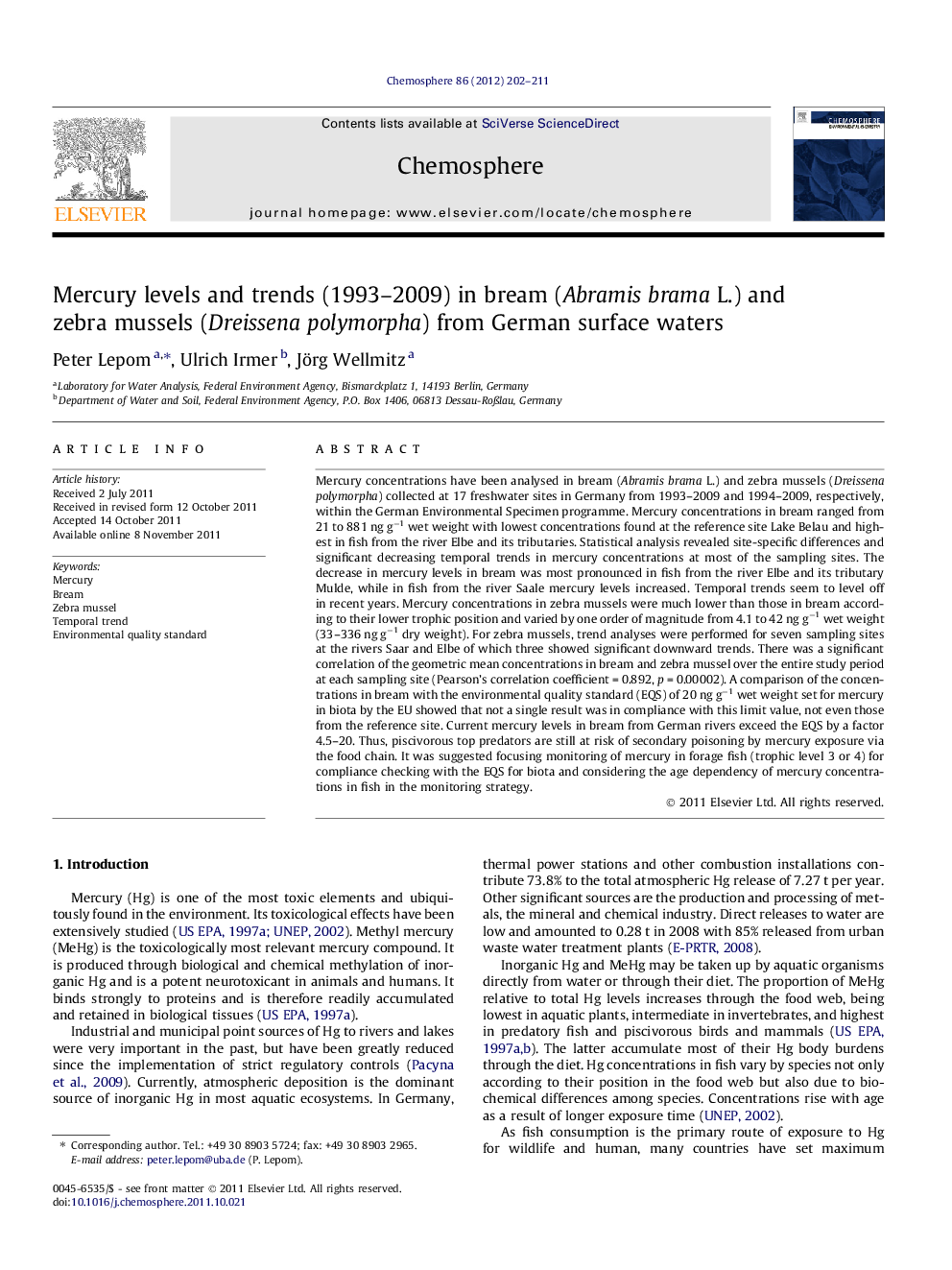| کد مقاله | کد نشریه | سال انتشار | مقاله انگلیسی | نسخه تمام متن |
|---|---|---|---|---|
| 4410533 | 1307550 | 2012 | 10 صفحه PDF | دانلود رایگان |

Mercury concentrations have been analysed in bream (Abramis brama L.) and zebra mussels (Dreissena polymorpha) collected at 17 freshwater sites in Germany from 1993–2009 and 1994–2009, respectively, within the German Environmental Specimen programme. Mercury concentrations in bream ranged from 21 to 881 ng g−1 wet weight with lowest concentrations found at the reference site Lake Belau and highest in fish from the river Elbe and its tributaries. Statistical analysis revealed site-specific differences and significant decreasing temporal trends in mercury concentrations at most of the sampling sites. The decrease in mercury levels in bream was most pronounced in fish from the river Elbe and its tributary Mulde, while in fish from the river Saale mercury levels increased. Temporal trends seem to level off in recent years. Mercury concentrations in zebra mussels were much lower than those in bream according to their lower trophic position and varied by one order of magnitude from 4.1 to 42 ng g−1 wet weight (33–336 ng g−1 dry weight). For zebra mussels, trend analyses were performed for seven sampling sites at the rivers Saar and Elbe of which three showed significant downward trends. There was a significant correlation of the geometric mean concentrations in bream and zebra mussel over the entire study period at each sampling site (Pearson’s correlation coefficient = 0.892, p = 0.00002). A comparison of the concentrations in bream with the environmental quality standard (EQS) of 20 ng g−1 wet weight set for mercury in biota by the EU showed that not a single result was in compliance with this limit value, not even those from the reference site. Current mercury levels in bream from German rivers exceed the EQS by a factor 4.5–20. Thus, piscivorous top predators are still at risk of secondary poisoning by mercury exposure via the food chain. It was suggested focusing monitoring of mercury in forage fish (trophic level 3 or 4) for compliance checking with the EQS for biota and considering the age dependency of mercury concentrations in fish in the monitoring strategy.
► Hg levels in bream and zebra mussels from 17 German freshwater sites (1993–2009).
► Significant downward trends in Hg contamination in bream at most sites.
► Hg concentrations in bream about 10 times higher than those in zebra mussels.
► Hg levels in bream clearly exceed the environmental quality standard set by the EU.
Journal: Chemosphere - Volume 86, Issue 2, January 2012, Pages 202–211